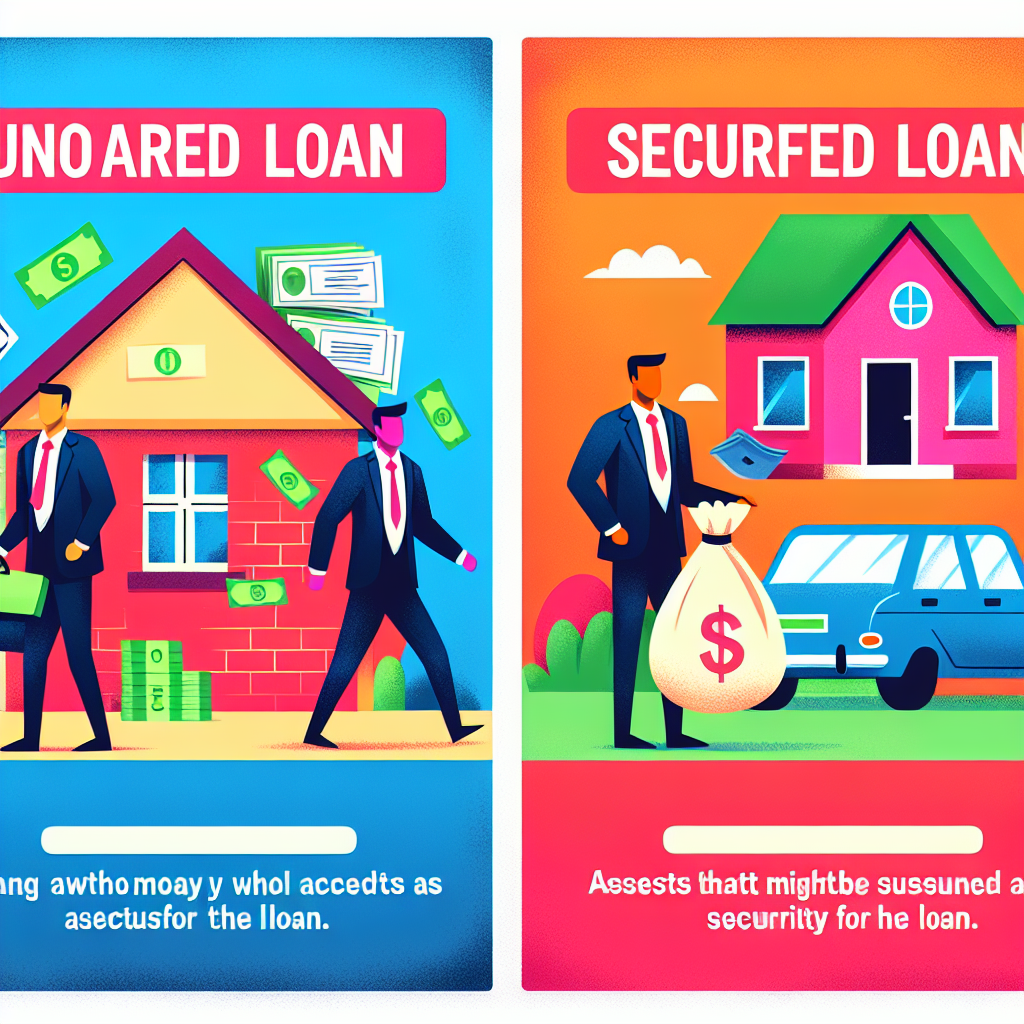
Unsecured loan and secured loan
Understanding Loans: Unsecured Loan and Secured Loan
When it comes to borrowing money, you may come across various types of loans. The two primary categories are unsecured loans and secured loans. Understanding the differences between these loan types is crucial in choosing the right one for your financial needs. This article will provide a deep dive into each loan type, their pros and cons, and how to make an informed decision.
What is a Secured Loan?
A secured loan is a type of borrowing where the loan is backed by collateral. Collateral is an asset that the lender can claim if you fail to repay the loan. Common examples of collateral include:
- Your home (in the case of a mortgage)
- A car
- Cash savings or other investments
Because secured loans are backed by collateral, they typically come with lower interest rates compared to unsecured loans. This is because the risk to the lender is diminished—the lender can seize the asset if you default on the loan.
Benefits of Secured Loans
- Lower Interest Rates: Since there's less risk for the lender, borrowers often enjoy lower interest rates.
- Higher Borrowing Limits: Secured loans often allow you to borrow larger amounts compared to unsecured loans.
- Improved Credit Score: Timely repayments can boost your credit score, as a secured loan helps diversify your credit mix.
Drawbacks of Secured Loans
- Risk of Asset Loss: If you fail to repay the loan, you risk losing your collateral.
- Longer Approval Times: The detailed assessment of collateral can make the approval process longer.
What is an Unsecured Loan?
An unsecured loan, as the name implies, does not require collateral. The lender offers this type of loan based solely on your creditworthiness and income. These are often seen in personal loans, credit cards, and student loans.
Benefits of Unsecured Loans
- No Risk of Asset Loss: Since no collateral is needed, borrowers won’t lose their assets if they default.
- Quick Access to Funds: Approval is typically faster compared to secured loans because there's no need for collateral evaluation.
- Flexible Use: Borrowers can use unsecured loans for various purposes from debt consolidation to medical expenses.
Drawbacks of Unsecured Loans
- Higher Interest Rates: Lenders charge higher rates due to the increased risk associated with unsecured loans.
- Lower Borrowing Limits: You may not be able to borrow as much as you could with a secured loan.
Key Differences Between Secured and Unsecured Loans
| Feature | Secured Loan | Unsecured Loan |
|---|---|---|
| Collateral Required | Yes | No |
| Interest Rates | Lower | Higher |
| Approval Time | Longer | Faster |
| Risk of Asset Loss | Yes | No |
| Typical Use | Home improvement, major purchases | Debt consolidation, personal expenses |
Deciding Which Type of Loan Is Right for You
Choosing between a secured and an unsecured loan depends on your unique financial situation, your credit score, and your borrowing needs. Here are a few factors to consider:
- Your Credit Score: If you have a high credit score, you may qualify for lower interest rates on unsecured loans.
- Your Need: If you need a large sum of money and are comfortable using collateral, a secured loan might be suitable.
- Your Ability to Repay: Always assess your financial situation to ensure you can repay the loan without stress.
Conclusion
In summary, understanding the nuances of secured and unsecured loans is pivotal for sound financial decision-making. While unsecured loans might offer quick access to funds without the risk of losing assets, secured loans can provide lower interest rates and larger sums for those willing to use their assets as collateral.
When evaluating your loan options, take the time to compare different lenders, interest rates, and terms. Your financial future can significantly benefit from the right choice, whether you decide on a secured or unsecured option. Remember, informed decisions lead to better financial health!
By Guest, Published on October 25th, 2024